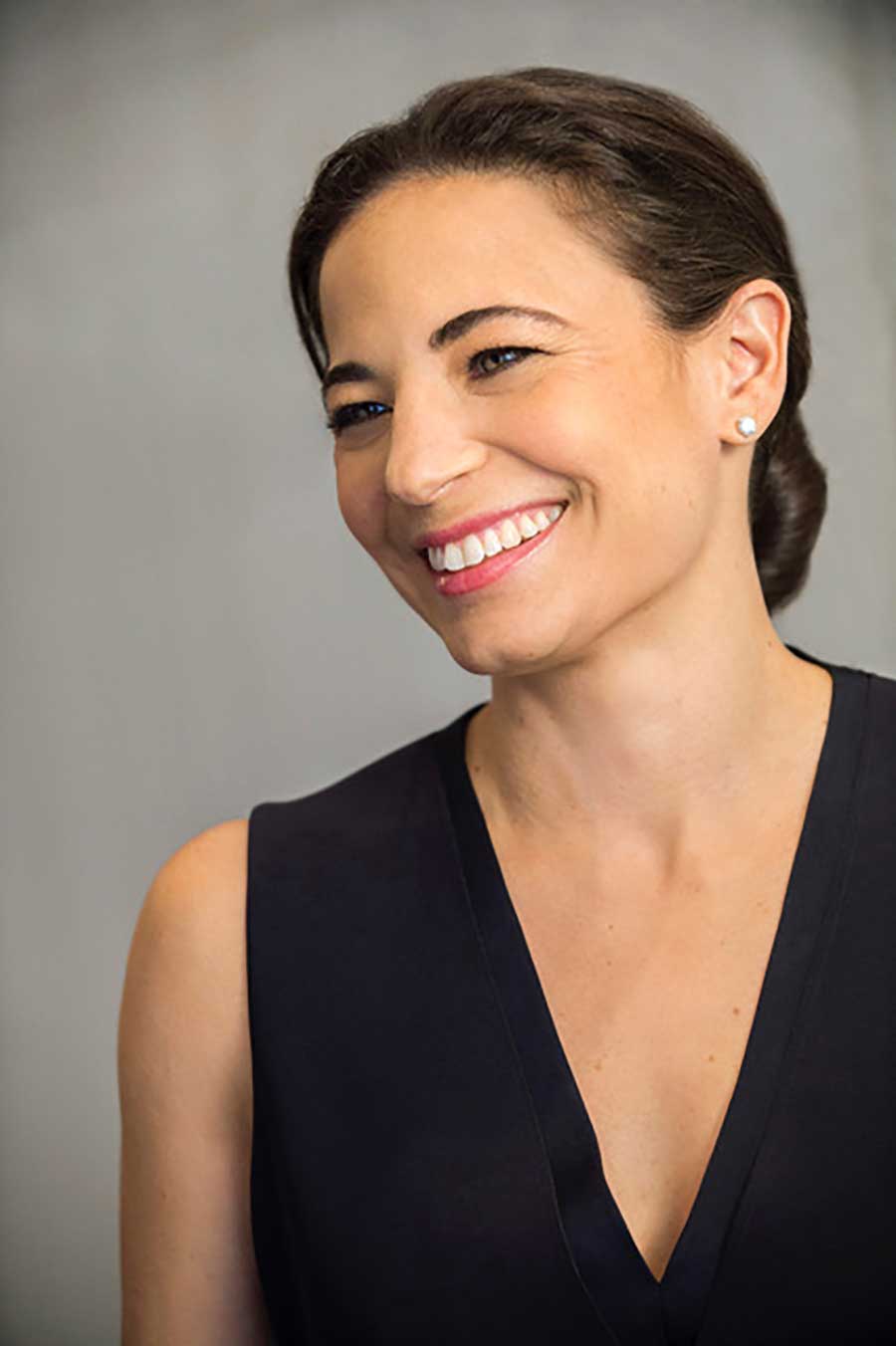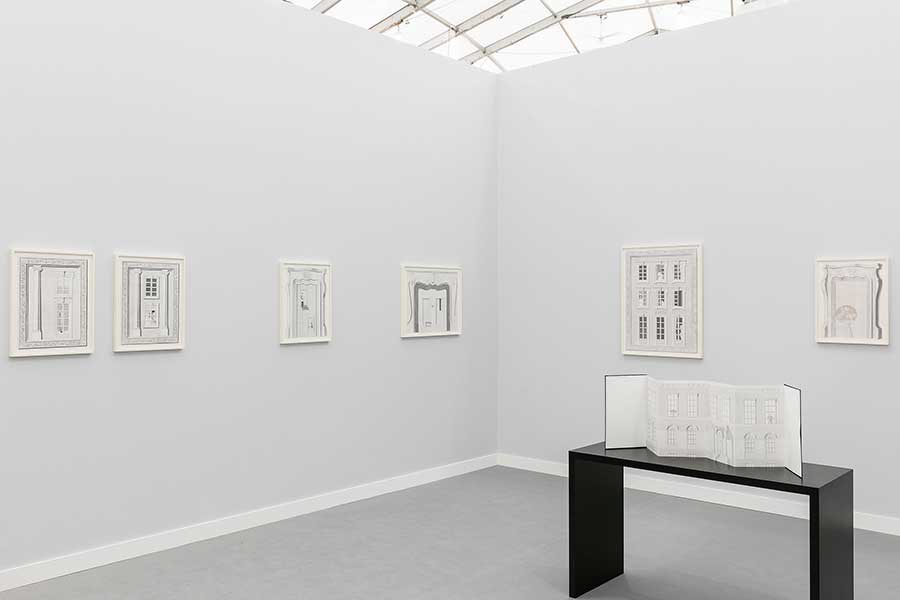Abigail Goodman: ‘A collection should function as a fingerprint‘
Ahead of her Conversation on Collecting at the fair, the art advisor talks about curiosity and why collectors need notebooks
Ahead of her Conversation on Collecting at the fair, the art advisor talks about curiosity and why collectors need notebooks

Can you tell us about your path to Goodman Taft?
In so many ways my path goes back to childhood. My mom is an artist and so was my grandfather. Art was always a central focus in my family. Then I was lucky enough to intern for Jock Reynolds in high school at the Addison Gallery of American Art at Phillips Academy and help with shows like Sol LeWitt and William H. Johnson. From that point on I was pretty certain that some connection to art and a curatorial practice was what I wanted professionally. After a brief spell in advertising, I took over my mother’s Boston gallery in 2001. I ran it for nearly a decade, working with the most fantastic artists to build an exhibition program that really served our community. Goodman Taft was the next chapter. It grew out of a desire for a different kind of engagement in the art world, one that allowed me to have a broader scope and a platform that could encompass varied possibilities from private collection building to public exhibitions and commissions. I work with tremendous colleagues Maria Taft and Molly Epstein, as well our fantastic team in Cambridge. I am one of the lucky people whose career is a source of joy.

How do you conceive your role within the art world ecology?
Great question. I guess at our core we are advocates: for our clients, for artists, for gallery programs, for the value of contemporary art dialogue. And we are studens. Curiosity drives our practice and we hope our enthusiasm and passion translates to others and inspires them to be patrons, stewards and advocates as well.
‘Emerging artists’ is a widely-used but sometimes nebulous term - how you would define an emerging artist?
There are many ways to define the term, so it is essential to state the parameters in any given conversation. The subset that I think is most readily associated with the term is artists who are young, both in age and career, have not yet had a major museum presence and whose average price point is $15,000 or under. In the Frame section at Frieze this week, that description would include Milano Chow and Eva LeWitt, among others. But another subset of “emerging” that has gotten a significant amount of curatorial, critical and market attention over the past several years is artists from decades past who might have very accomplished but overlooked practices, and who have only lately been reintroduced to and supported in the marketplace.

Given that the category is based in this way on an artists career stage or status, rather than a specific art practice, are there generalities or trends that unite the work of these artists in terms of the form it takes?
I think you can no more qualify the characteristics of all emerging artists than of the art world generally. That said, at a given moment in time you can pick out certain cultural or aesthetic preoccupations that seem prevalent across a range of artistic practices. At this moment I would say many artists feel the responsibility to engage directly in issues of identity and politics. There also seems to be a return to figuration among younger artists, perhaps as the body is once again positioned as a site of critical discourse. But you could just as easily identify other subject areas, and the engagement in these subjects is definitely not limited to the emerging segment of the art world.
Are there particular kinds of collectors who are particularly drawn to emerging artists? What’s the typical profile of a collector suited to this area?
The draw to collect emerging artists tends to fall into a few categories: those who love the hunt for new talent, are excited by the dialogue with artists and enjoy the rush when someone they championed early is validated critically and/or by the market. And there are others who come to it because they are purely driven by the economic opportunities they might perceive, and others still for whom supporting artists young in their careers is a reflection of their values.

What are the key forums for encountering the work of these artists - where would collectors make discoveries and do research?
If you are interested in emerging artists, it helps if you are an omnivore for information! Depending on how early in their careers you are looking to find artists, graduate school exhibitions, fair sections like Frame at Frieze New York, biennials and triennials and of course younger galleries (for example Chapter NY or On Stellar Rays in New York; Gagareena or Jenny’s in Los Angeles; and Micky Schubert or Tanya Leighton in Berlin) are all important forums for discovery. If one wants to cast a net beyond his or her own location, it also helps to visit cities that have traditions of strong artistic communities with more affordable studio space and housing like Berlin or Mexico City. Reading publications like frieze and Artforum and online journals like Hyperallergic provide great insight too, especially when they do their round ups. It can also be helpful to join museum groups, where you meet like-minded individuals and have access to the passions and insights of curators.

Are there any standout examples in this area at Frieze New York this year?
Yes! I was taken with Eva LeWitt’s work from VI, VII immediately. Such a standout body of work! Milano Chow from Chapter NY was also fantastic, and Susan Cianciolo from Bridget Donahue and Hudinilson Jr. at Galeria Jaqueline Martins were also very memorable presentations. Outside of the Frame section, Kiki Kogelnik at Simone Subal was excellent.

What would be your advice to a budding collector who may be visiting an art fair for the first time, or starting out on a collection?
Bring a notebook! Seriously, it really helps to track your interests over time. The other things all sound obvious, but they make a difference. Try and look slowly, ask questions, take pictures of things that you respond to, look again at things you initially disliked to figure out why you had initially disliked them. Let curiosity lead you. Learn to read artists’ resumes and identify some of the key markers that indicate critical interest in the work. And remember that the most fulfilling collections are driven by passion and a collector’s individual eye. It is important and helpful to listen to the wisdom and insight of others but not at the expense of building a collection that matters to you. A collection should function as a fingerprint.
Outside the fair, what else will you be looking forward to during this Frieze Week?
There have already been so many highlights this week, such as the four fantastic exhibitions by women artists at the New Museum: Lynette Yiadom-Boakye, Kaari Upson, Carol Rama and Elaine Cameron-Weir and “We Wanted a Revolution” at the Brooklyn Museum. We made one visit to Harlem earlier in the week to see the shows at Elizabeth Dee and Broadway 1602 – both very strong. I need to head back there for Joan Jonas at Gavin Brown’s. We really enjoyed revisiting Allan D’Arcangelo at Garth Greenan and Melvin Edwards at Alexander Gray. Kevin Beasley at Casey Kaplan is a must. Felix Gonzalez-Torres at David Zwirner was ethereal and poignant, and Nairy Bahgramian at Marian Goodman was superb as well. The collaboration between Salon 94 and Performa at Lever House is definitely worth a visit too, as is Aki Sasamoto at the Kitchen….and so much more! There is really wealth of things to see right now!






















